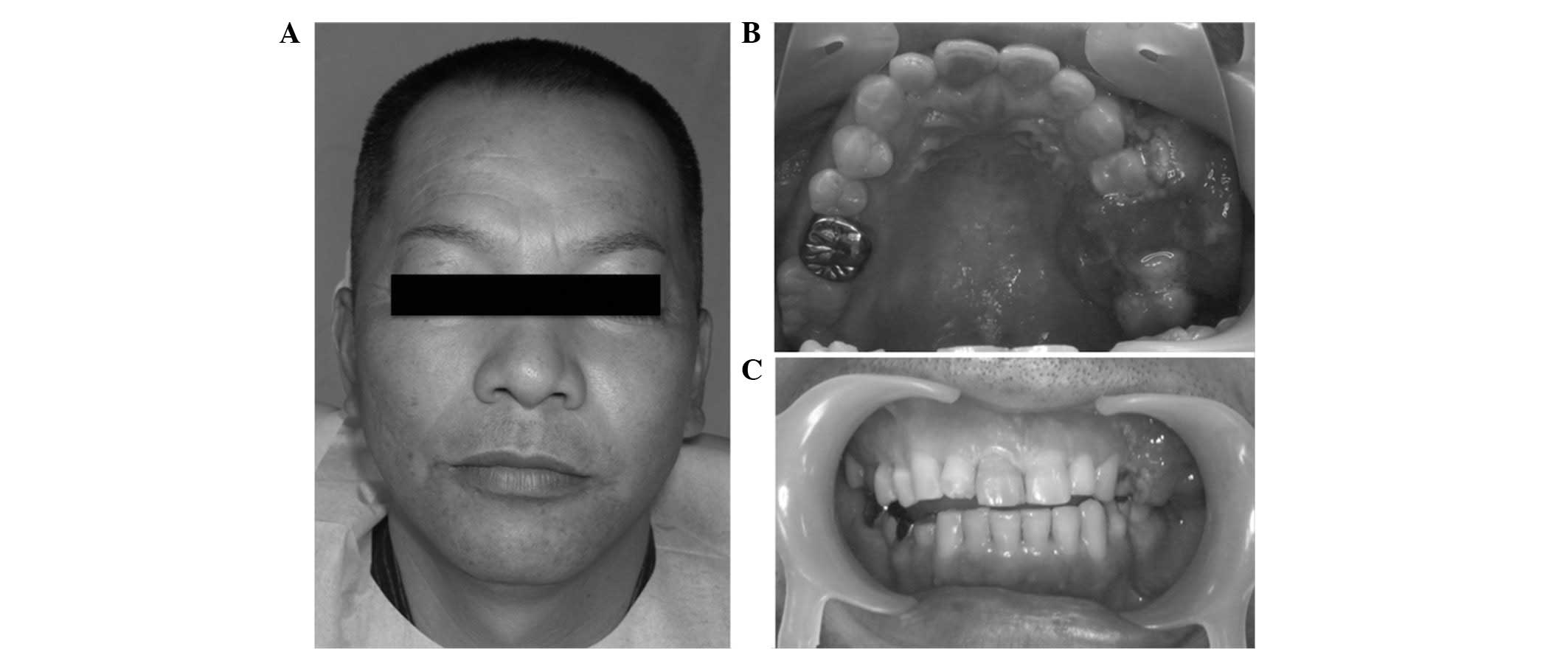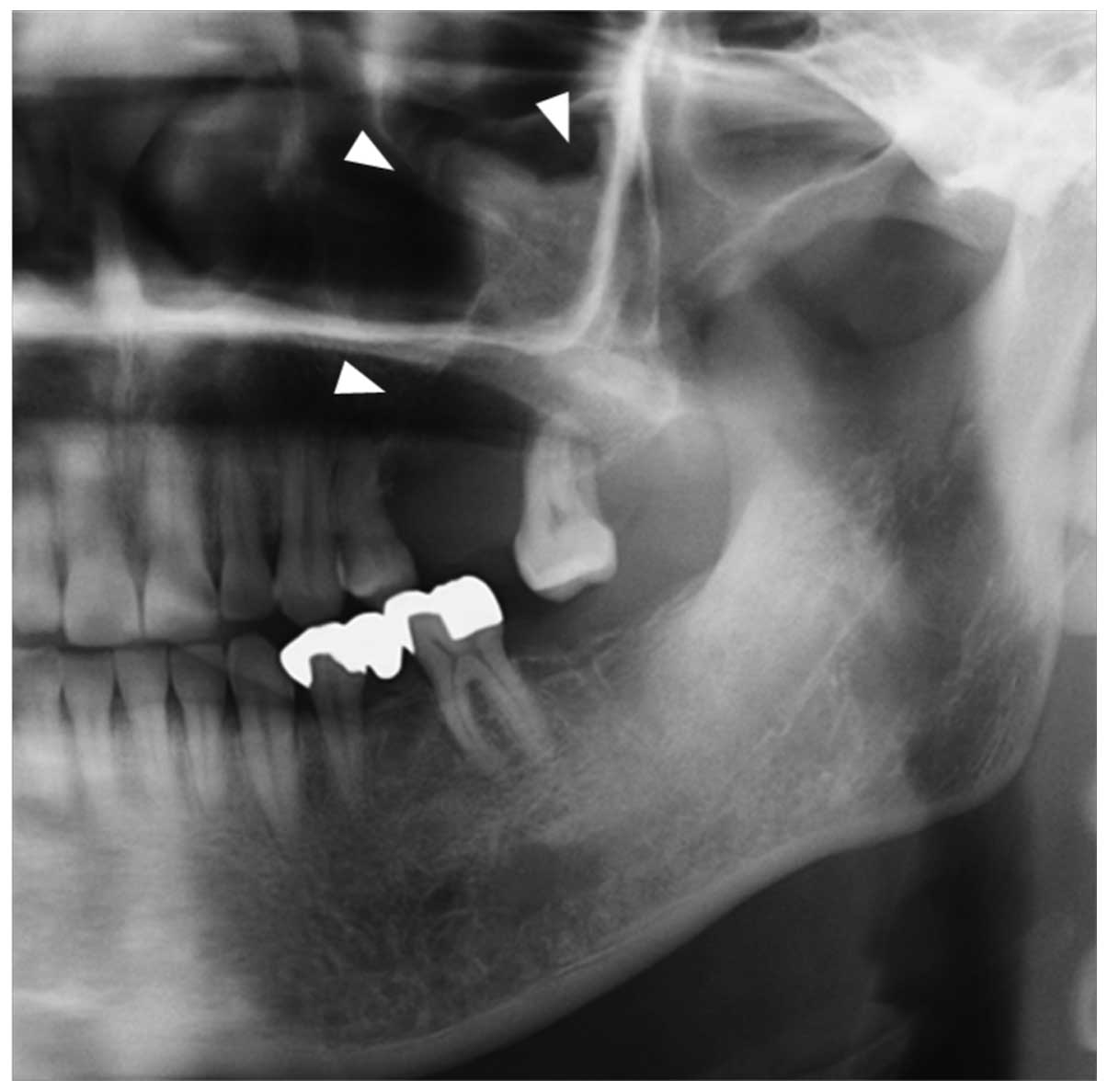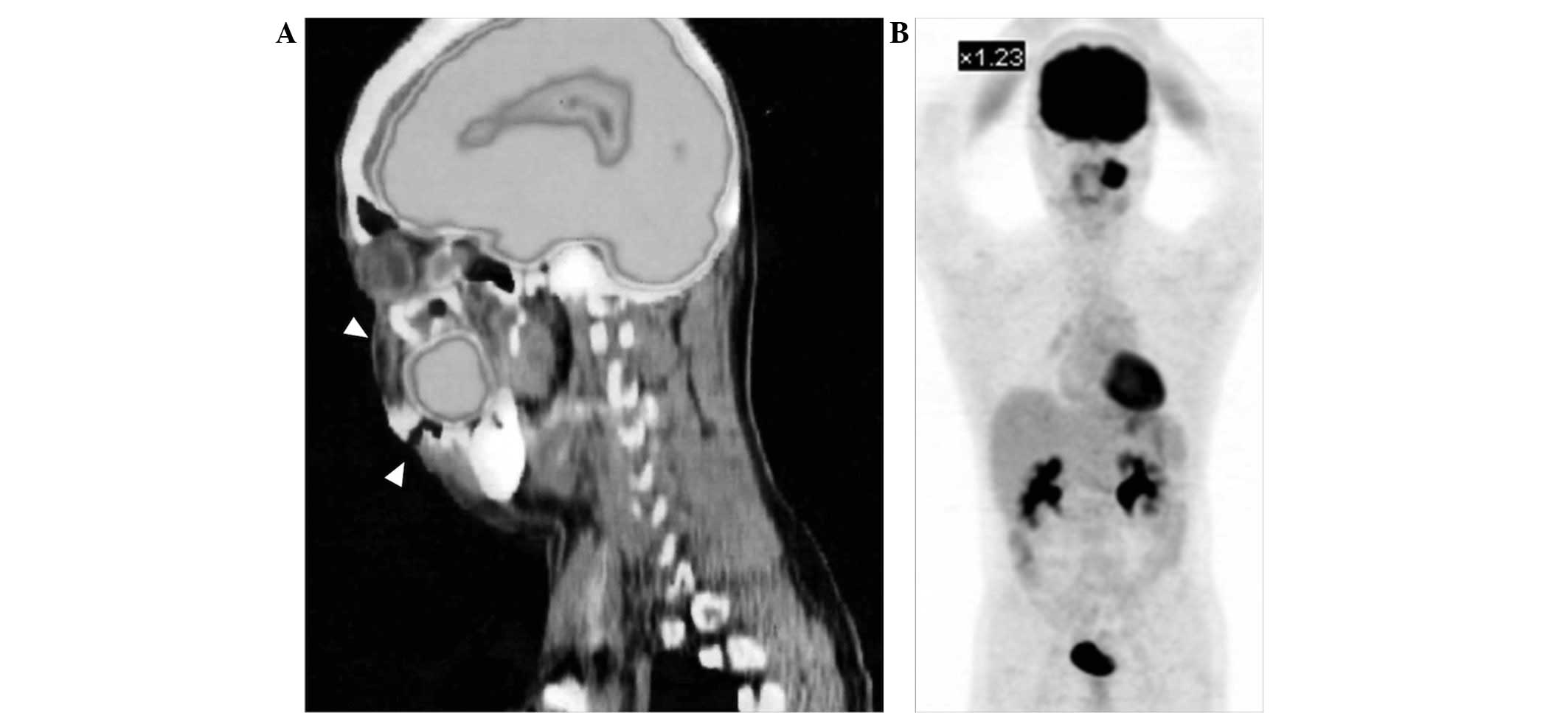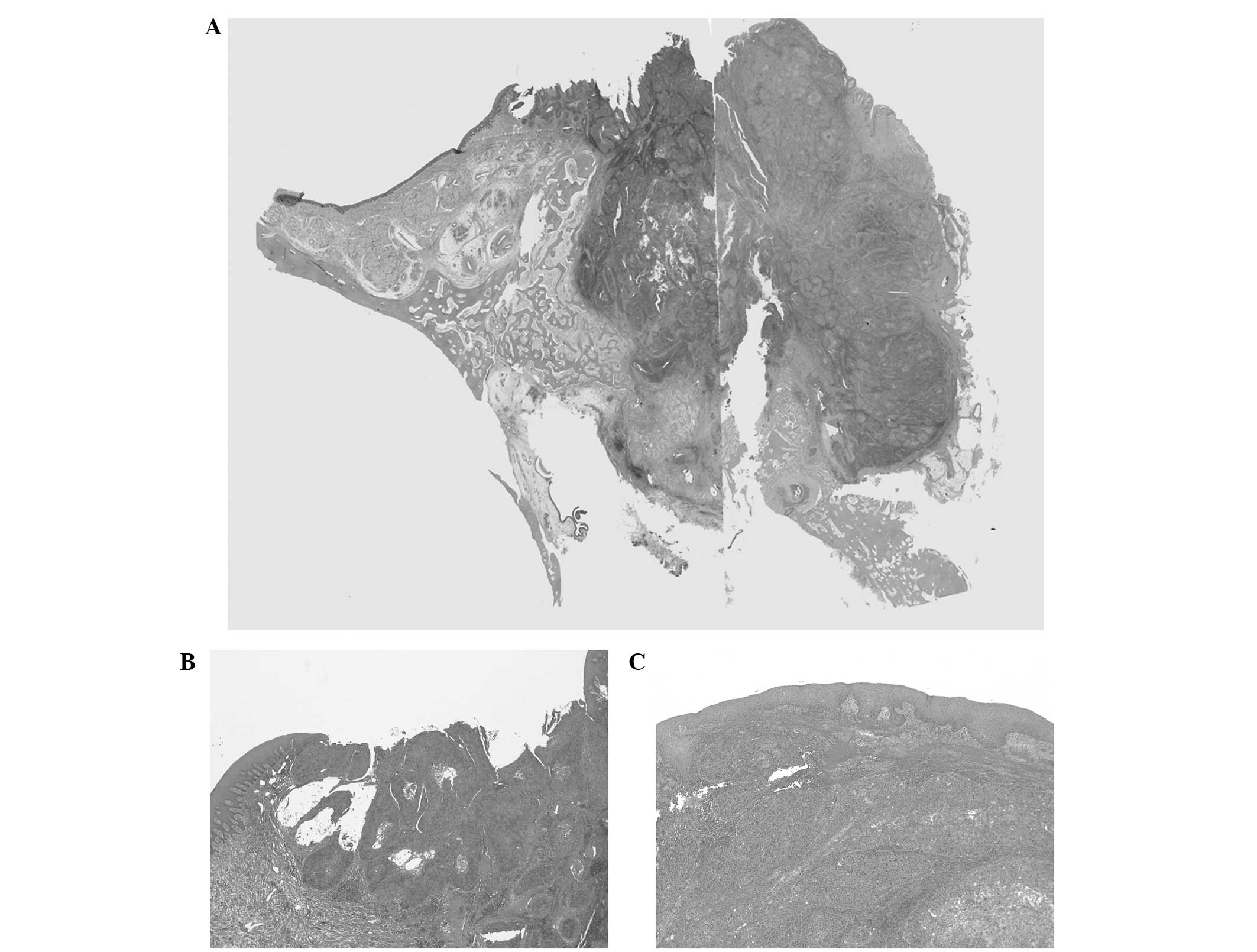Primary intraosseous squamous cell carcinoma of the maxilla possibly arising from an infected residual cyst: A case report
- Authors:
- Published online on: October 27, 2014 https://doi.org/10.3892/ol.2014.2644
- Pages: 131-135
Metrics: Total
Views: 0 (Spandidos Publications: | PMC Statistics: )
Total PDF Downloads: 0 (Spandidos Publications: | PMC Statistics: )
Abstract
Primary intraosseous squamous cell carcinoma (PIOSCC) is a rare type of odontogenic carcinoma arising from the jawbone. Odontogenic cysts are true cysts that arise from the dental epithelium, which is associated with tooth formation. The epithelial lining of odontogenic cysts has the potential to transform into various types of odontogenic tumor; however, this transformation from an odontogenic cyst to a malignant tumor is rare. The definitive diagnosis for PIOSCC generally requires the observation of either features of squamous cell carcinoma (SCC) within the jawbone that are distinct from direct invasion from the surface oral epithelium, or evidence of SCC arising from odontogenic epithelium and from tumors that have metastasized to the jawbone from distant sites. In the present study, a case of PIOSCC of the maxilla is presented, which, based on the results of computed tomography and the clinical course, was hypothesized to have originated from an infected residual cyst.














